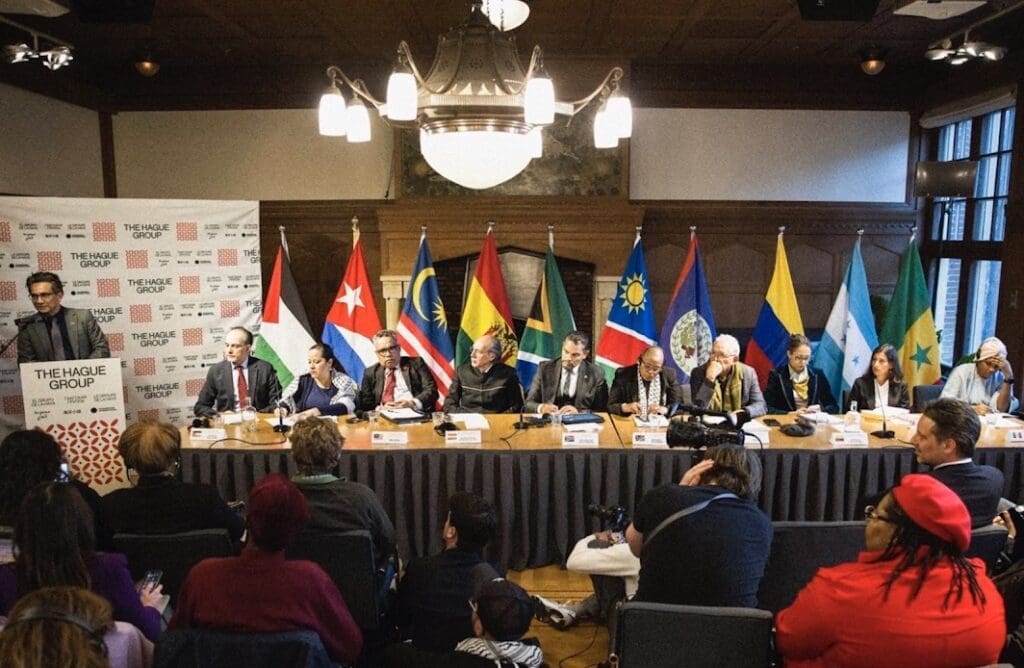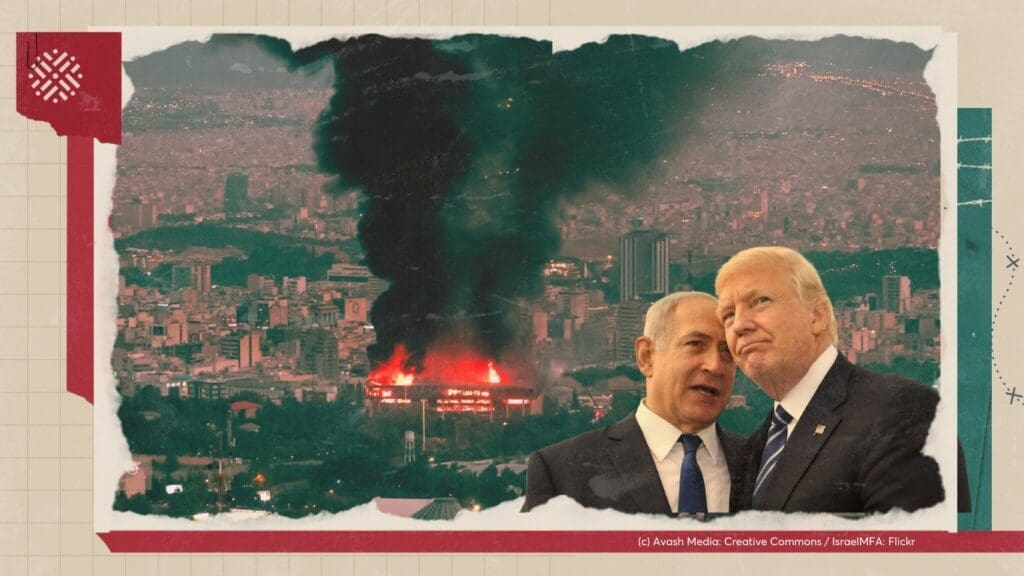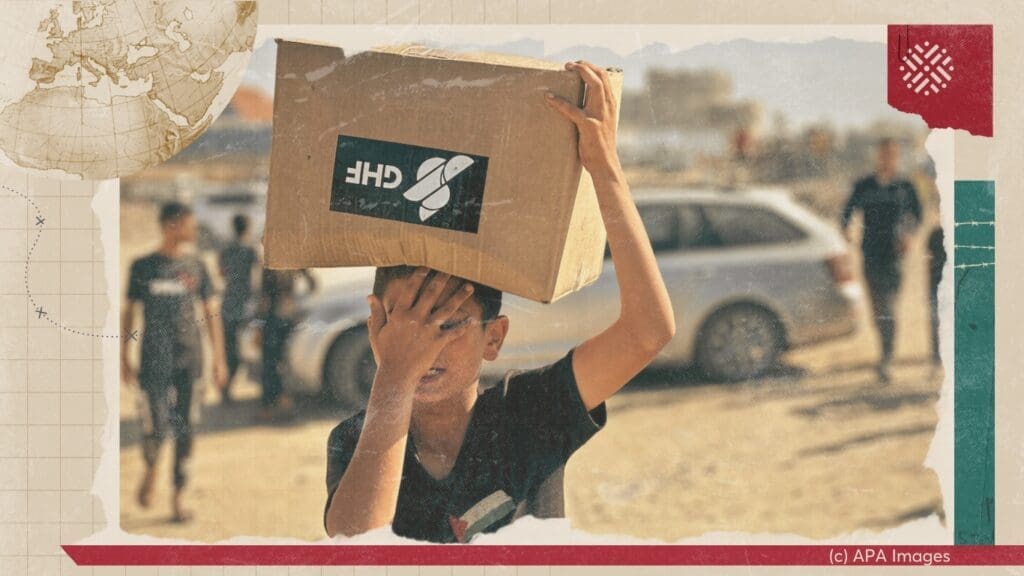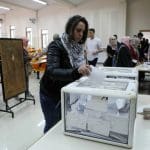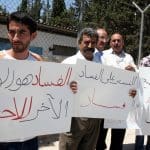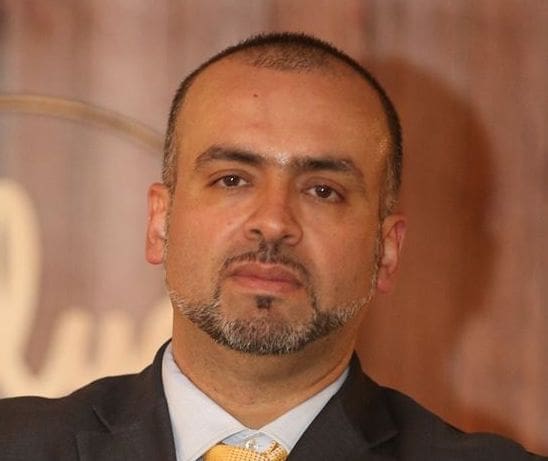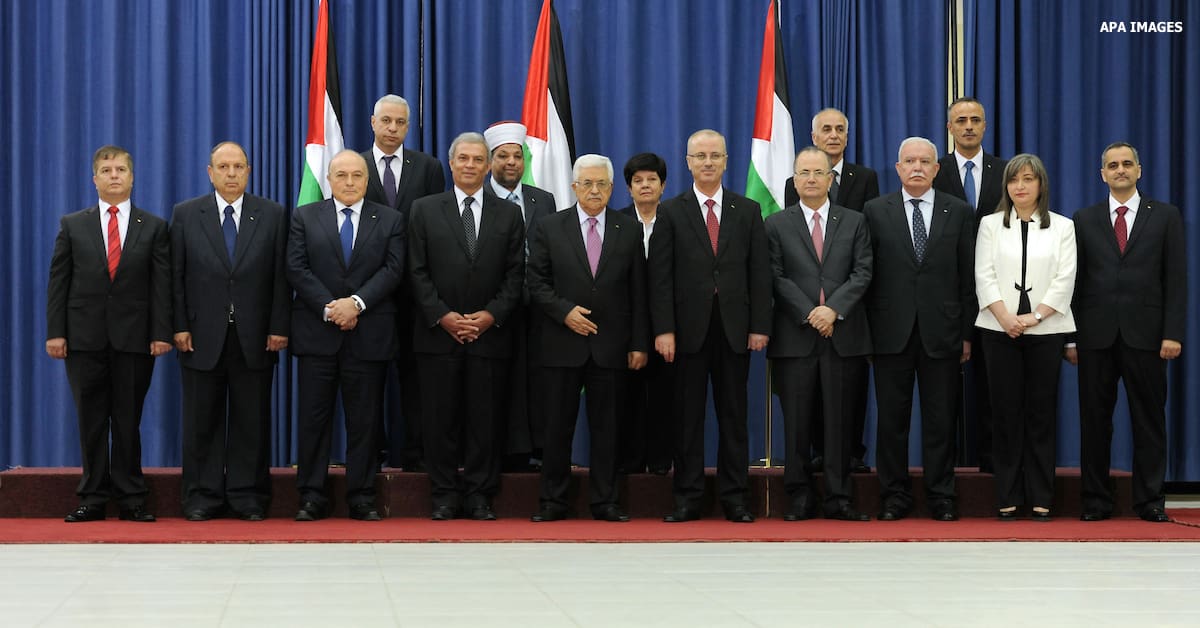
Executive Summary
Key Points
- Though the Palestinian Authority (PA) appears to be at the center of Palestinian politics, it has brought few real changes to the way the West Bank is governed over its 22 years of existence.
- In part due to the Palestinian Authority’s weakness, the two-state solution has failed. The only alternative, however, is not the one-state solution, but variations on the current status quo – all of which lead to a more intensified condition of apartheid.
- In time, with a more amenable regional and international atmosphere, a different scenario – revolutionary in nature – may become the alternative to apartheid.
What Changed in Governance post-Oslo (and What Didn’t)
Despite the existence of the Palestinian Authority since 1994, much of the pre-Oslo Accords governing framework for the West Bank has remained. Under the PA, for example, municipalities and committees for refugee camps have continued to function as they did prior to the PA’s establishment. The religious institutions of the West Bank’s various communities mainly govern family and personal status laws, as they did pre-PA. Further, the PA has retained the use of military courts as adopted by the PLO. The respective judicial and legislative systems of the West Bank and Gaza Strip have remained separate as well.
However, there is one sector in which the PA has real influence: security. The PA has created a huge network of civil servants and security forces that are dependent on it for their livelihood. They in turn serve the PA by helping to keep it alive and allowing it to maintain a minimum degree of control over the population. Yet even the security apparatus is fragmented. For instance, internal systems are disconnected, and information is rarely circulated among departments. Thus there is no real cohesive or smoothly functioning Palestinian body politic in the Occupied Palestinian Territory (OPT).
Likely Scenarios for the PA’s Future: More (and More) of the Same
The PA has not been governing the Gaza Strip since 2007, and one can argue that it also has not been governing the West Bank. Yet the PA’s tenure will probably continue for the short and medium term. This is because of the likely perpetuation of the status quo, which is shored up by the continued fragmentation of the West Bank and Gaza Strip.
The PA’s tenure will likely morph into an intensified version of more of the same – what the author calls StatusQuo+. StatusQuo+ refers to a state of Palestine that is a non-sovereign entity and completely dependent on the international donor community and Israel. Under this system, Israel would continue to increase areas under its control, and the PA would continue to be in charge of the Palestinian population, without any authority vis-à-vis the Israelis. Palestinian political and economic elites would continue to profit from privileges of the occupation authority. This system would institutionalize apartheid.
StatusQuo+ means the demise of the two-state solution. Yet the likely alternative is not the one-state solution, but the no-state solution. This would mean the maintenance and intensification of the self-government authorities of the local Palestinian population – but in domains proscribed by Israeli authorities. The no-state solution could then lead to a three-state solution: Besides Israel, which would maintain territory obtained in 1948 plus the expanded route of the Separation Wall, Palestinians would establish a mini-state in the Gaza Strip. The third state would be in the West Bank, minus East Jerusalem, and it would be an apartheid regime that with time would become a bi-national state. With more time, it could be incorporated into Israel proper, or perhaps simply become a more and more Jewish state.
The Failure of the Two-State Solution and Revolutionary Possibilities
There are many reasons why the two-state solution has failed, including the increasingly irreversible separation of the West Bank and Gaza Strip, the PA’s dependence on Israel as the occupation authority, and the continued fragmentation of the West Bank due to settlements, byroads for settlers, and the Separation Wall.
The first two scenarios resulting from this failure – StatusQuo+ and the no-state solution – would likely lead to “stability” in the short and medium term. The third scenario – the three-state solution – would result in further fragmentation of the Palestinian body politic. Yet the stability would not be real; it would only be the result of the containment of the local population and of the management of regional and international pressures. Such arrangements are unsustainable in the long term, as people cannot be controlled in such a way forever. Indeed, with time, and with a more amenable regional and international atmosphere, a fourth scenario – revolutionary in nature – could become the alternative to the status quo.
Overview
Conventional thinking assigns the Palestinian Authority (PA) an indispensable governing role in the Occupied Palestinian Territory (OPT). The PA is also often described as a national achievement, having enabled Palestinians to govern, for the first time, a Palestinian population over a Palestinian land. The PA also supplies hundreds of thousands of Palestinians with employment through the public sector. It is the international community’s preferred interlocutor – as opposed to the Palestine Liberation Organization (PLO). For Israel, the PA enables the maintenance of public order in the West Bank’s major cities.1
While the PA still appears to be at the center of Palestinian politics, internally as well as externally, it has brought few real changes to the way the West Bank is governed after 22 years of existence. In fact, the PA’s governance function is virtually irrelevant. This weakness will play out on the political status quo in ways that both policymakers and human rights advocates would do well to understand.
What Changed in Governance post-Oslo (and What Didn’t)
The PA was established in 1994 as a result of the Oslo Accords. It was supposed to operate for a maximum of five years, with final negotiations ostensibly succeeding by then. The Oslo Accords’ framework of governance has remained largely intact as peace negotiations have failed time and again. This has allowed Israel to remain an occupying force exercising sovereign powers over the OPT, while the PA has become the main provider of public services for the Palestinian population of the West Bank and Gaza Strip.
Under the PA, municipalities and committees for refugee camps have continued to function as they did prior to the PA’s establishment, and many have a longstanding history: Ramallah, for example, recently commemorated its municipality’s centennial. Of course, the PA has introduced some new legislation that affects local governance, including the election of members of municipality councils and the establishment of a ministry for local governance. However, the structure of municipalities, the collection of revenue, and the governance of civil servants in municipalities have retained their pre-PA characteristics, keeping their dependence on central PA institutions minimal. Moreover, there has been no local government structure coordinating between municipalities and the central authority, and there have been no calls for change.
“The Palestinian Authority’s weakness will play out on the political status quo in ways that both policymakers and human rights advocates would do well to understand.”
The religious institutions of the West Bank’s various communities mainly govern family and personal status laws. Different Christian sects use different personal status codes, and ecclesiastic courts govern these personal status issues without any jurisdiction of civil courts.2 Shari‘a courts for Muslims are organized in a similar way in the West Bank.3 The establishment of the PA therefore did not introduce new laws or change existing ones in this domain, and it did not alter the religious and ecclesiastic courts’ structure and jurisdiction. As far as civil and criminal cases, Palestinian courts still govern these in the West Bank based on the Ottoman Majallah and on Jordanian criminal law.4
Further, the PA has retained the use of military courts as adopted by the PLO. The retention of these courts means that military laws are still applicable to Palestinian subjects, and through state security, to civilians as well. At the same time, Israeli military courts regulate Israel’s rule of its controlled areas of the West Bank (such as military zones, natural reserve areas, and Area C). Both Palestinian and Israeli military courts existed before the creation of the PA and have functioned as usual during the PA era.
Though the PA introduced new laws that were meant to unify the judicial systems of the West Bank and Gaza Strip, in practice the systems have maintained substantial differences – with the Hamas takeover of Gaza in 2007 intensifying those differences. The PA tried legal unification through central legislation. Although the Palestinian Legislative Council (PLC) adopted most of these laws after the first elections of 1996, it has been unable to convene since Hamas’ coup in Gaza in 2007. Since then, legislation has only been effected by the PA president through decrees, and only in the West Bank. The PA president’s direct control over executive offices has fostered a lack of accountability, especially because the president also chairs the PLO Executive Committee.
After 2007, Hamas started to issue its own legislation for the Gaza Strip and ruled through the caretaker government headed by Ismail Haniyeh. The National Consensus Government agreed in June 2014 consisted of 17 technocrats under the presidency of Rami Hamdallah. Its period of work was supposed to consist of no more than six months, and its main task was to prepare for the legislative and presidential elections. However, the plan has not been realized, and this government is still in place. It has been able to visit Gaza only once, without having, in reality, the ability to govern it. Accordingly, legislative activity in the OPT carries on without a centralized legislative body.
The current PA government mainly deals with internal matters, while the president and his entourage – without public consultation – take part in negotiations with Israel and handle the relationship with the international community although this is a PLO role. Indeed, the PLO Executive Committee often does not approve steps adopted by the president, such as the resumption of talks with Israel without a freeze on settlement activities.
All these examples illustrate a fundamental point: There is no real cohesive or smoothly functioning Palestinian body politic in the OPT. The political space has remained fragmented, without unified executive authority within the PA nor a defined system of government. The PA continues to depend on individuals holding certain offices, specifically their ties with the international donor community that supports the so-called peace process, and retains security cooperation and coordination with Israel.
Yet there is one area in which the PA has real influence: The security apparatus. This sector has played a central role in the post-2007 PA structure, and much of the foreign aid from the US and particularly the EU goes to the training of security forces. Most of the PA’s budget is dedicated to the security forces as well as salaries of civilian PA officials; this has created a huge network of civil servants and security forces that help keep the PA alive and allow it to maintain a minimum degree of control over the population. The security apparatus is therefore necessary for the PA, and the PA is necessary for the security apparatus it created.
However, the security and civil administrations of the PA are not unified. Internal systems are disconnected, and information is rarely circulated among departments. In addition, the security forces have a fragmented leadership, and report principally to the PA president rather than the PA Minister of Interior or even the Council of Ministers. Reforms since 2003 have contributed to a sense of increased order in PA cities, but not as a result of internal reorganization. Rather, coordination with Israeli authorities, particularly on capacity building programs for security forces, has meant that Israel – until the recent stabbings and related individual attacks carried out mainly by young Palestinians – has since 2007 rarely suffered from any serious violence. This resulted, until recently, in the easing of some checkpoints and an increased number of permits for Palestinians to enter occupied East Jerusalem and Israel (but not Gaza).
The inflation in public employment through the PA has created a deep dependence, in both the West Bank and Gaza Strip, on the maintenance of the PA, despite such problems as discrepancies in the distribution of salaries and an inefficient use of human resources. This, coupled with the PA’s other financial policies that have increased Palestinians’ economic dependence on it, makes it possible that the disappearance of the PA would result in an economic and financial crisis.
The PA in the West Bank has helped accelerate an economic boom in certain sectors, particularly construction, which has resulted in higher land and housing prices. Ramallah, the political center of the PA, has been fashioned into a space for the wealthy, whether those who are former owners of land, contractors, or large companies, or those who are benefitting from deals resulting from the Oslo Accords. These deals have helped to create monopolies among PA high ranking officials, especially in relation to imported basic products. As such, a new economic elite overlaps with and shares interests with the current political leadership. These developments also mean that what looks like an improved economic situation is in fact one in which the gap between rich and poor is widening. Further, most of the growth depends on loans, and prices do not reflect real value.
Likely Scenarios for the PA’s Future: More (and More) of the Same
The PA has not been governing the Gaza Strip since 2007. One can argue that it also has not been governing the West Bank. The PA remains simply to maintain the security apparatus and civil administration, and it will remain as long as it can preserve its co-dependent relationship with the international donor community and with Israel’s security apparatus.
The PA’s tenure will probably continue for the short and medium term, due to the likely perpetuation of the status quo, which is in part dependent on the continued fragmentation of the West Bank and Gaza Strip. This separation is not contingent on the divide between Fatah and Hamas, as it is older than the 2007 coup. It can be traced back to the West Bank and Gaza Strip that in 1948 fell under Jordanian and Egyptian control, respectively. Israel’s policy in the OPT since 1967 has intensified this fragmentation, which will presumably continue even if reconciliation occurs due to deep-rooted social, economic, and political differences.
Hamas in the Gaza Strip rather than Fatah in the West Bank may be a less sustainable entity. Egypt’s 2013 regime change brought a president who is more sympathetic to the PA and is focused on cracking down on Egypt’s Muslim Brotherhood and Islamist movements more generally. This change in circumstances indirectly benefits the PA and will in all probability help it to continue to survive. In contrast, the change may help bring about the demise of Hamas.
“The Palestinian Authority has not been governing the Gaza Strip since 2007. One can argue that it also has not been governing the West Bank.”
But even with Hamas remaining in power – and without an official agreement between Hamas and Israel – it is more likely that a temporary “solution” for the Gaza Strip could be reached. This kind of solution would not be far away from the logic that was used to justify Ariel Sharon’s withdrawal from Gaza in 2005. It would probably see only limited (though possible) movement of goods and people to and from Gaza via secured borders with Israel. Such an agreement could only be accomplished with the support and guarantee of the Egyptian government and army, as Israel has no control over the Rafah crossing – the only official passage from Gaza to Egypt. This is one element of what would constitute a situation of “status quo plus” – hereafter StatusQuo+.
The StatusQuo+ is the term I am using for a state of Palestine that is a non-sovereign entity and completely dependent on the international donor community and Israel. This means that current Israeli policies that aim to increase the areas under its control, and the creation of a dual system in the West Bank – one for settlers and Israeli citizens, and the other for the local population – would intensify with time. The PA would stay in charge of the local Palestinian population, without any authority vis-à-vis the Israelis. Its coordination with Israel would be necessary to continue to keep the local population under control. Such a system has all the necessary prerequisites to institutionalize apartheid.5
The PA would only serve as an intermediary to the Palestinian population under this apartheid regime. It would not take the form of a centralized national authority, but would consist of a group of political and economic elites as well as the security apparatus and civil administration, which could be termed the “Palestinian Bureaucracy.” This group would become more complicit with time in regard to the structure of West Bank apartheid.
These political and economic elites would profit from ongoing privileges of the occupation authority. Israel would continue to build new settlements, and the Separation Wall, which divides East Jerusalem from the rest of the OPT and de facto annexes parts of the Palestinian territories beyond the Green Line, would even further fragment the populated areas of the West Bank in order to incorporate most of Israel’s settlements and the Jordan Valley. The Palestinian Bureaucracy, through profits from the newly admitted “State of Palestine,” would in time likely be separated from the PLO (or from the agency purporting to represent the Palestinian population of the Diaspora).
StatusQuo+ would mean that the West Bank PA must look for sources for the extension of its “sovereignty” outside of territorial continuity or the unified control of the population. The United Nations General Assembly’s formal recognition of Palestine as a non-member state in 2012, as well as the ratification of international treaties, would serve to help accelerate the process of looking for post-statehood scenarios, even before real statehood is achieved.6
The PA would need to increase cooperation with Jordanian authorities for this reason. Its aim to increase ties with Jordan would likely include past plans, including the confederation option before real statehood is achieved. Yet Jordan would presumably work to avoid an increase in its Palestinian population.7 This situation could be a satisfactory one for both Israel and Jordan. Israel would continue to control most of the West Bank without real resistance and with borders secured, while Jordan would block any transfer of population and could start (or intensify) a denationalization process for some of its own citizens of Palestinian origin, due to the establishment of a Palestinian state – however nominal.
This StatusQuo+ system would be unsustainable with the passing of time because it would not satisfy the Palestinian peoples’ right to self-determination. Many rightly believe that this future reality would lead to the demise of the two-state solution. However, contrary to conventional knowledge, the alternative would not be the one-state solution, but rather the no-state solution. Such a “solution” would mean maintaining and intensifying self-government authorities for the local Palestinian population – but in domains proscribed by Israeli authorities. This would apply for the West Bank as well as the Gaza Strip, although separately. It could even apply separately to different West Bank regions.
In the medium term, this no-state solution could lead to an (at least) three-state solution. Besides Israel, which would maintain territory obtained in 1948, plus the expanded route of the Separation Wall, Palestinians would establish a mini-state in the Gaza Strip. This state would be demilitarized and under the protection and support of the Egyptian government. The third state would be established in the West Bank, minus East Jerusalem. This state would have the appearance of an ethnically federal structure: an area for settler Jews, and another for the local Palestinian population – but in reality it would be an apartheid regime that with time would become a bi-national state. With more time it could be incorporated into Israel proper, or perhaps take its own route and simply become a more and more Jewish state.
“The status quo is unsustainable with the passing of time because it does not satisfy the Palestinian peoples’ right to self-determination.”
In case this bi-national/apartheid “state” remains separate from Israel, it would not be recognized by states other than Israel. Israel would maintain a relationship with that state that is, mutatis mutandis, similar to the way Turkey maintains ties to Turkish Cyprus. The (settler) “State of the West Bank” – or, perhaps, “The State of Judea and Samaria” – would serve Israel by keeping its borders secured. The very existence of a Palestinian population in that state would also help Israel to increase and ameliorate ties with regional Arab countries, aiding Israel’s integration in the Middle East. Further, the state might even help Israel to denationalize its own Palestinian citizens. Though these individuals would remain within the state of Israel proper to avoid a reaction from the international community, which would not look kindly on a forcible transfer of population, they would become citizens of this new bi-national state. Denationalization in this sense would consist of a legal and political process through which Palestinians would be excluded from the Israeli body politic – albeit short of physical displacement.
The Failure of the Two-State Solution and Revolutionary Possibilities
There is no doubt that the two-state solution has failed. There are many reasons for this failure. For one, the separation of the Gaza Strip from the rest of the OPT has become increasingly irreversible as a result of Israel’s withdrawal in 2005 and the Hamas coup in 2007. The PA’s dependency on Israel as the occupation authority is undeniable, and it has not been affected by the United Nations General Assembly’s resolution that recognized Palestine as a non-member state. The West Bank has been further fragmented by the construction of byroads for settlers, the building of new settlements and the growth of existing ones, and the erection of the Separation Wall. All of these sobering developments have rendered a two-state solution impossible.
The one-state solution is not necessarily the only available alternative. The current status quo is indeed a strong candidate for longevity, although with some changes that would lead to a StatusQuo+ system. This may further lead in the medium term to the no-state solution for the West Bank and Gaza Strip, which could progress to a three-state solution: one Palestinian, another Jewish, and another formally bi-national or ethnically federal, but in reality a substantially updated apartheid regime with the elites of the Palestinian Bureaucracy serving as interlocutors with the local population.
The first two scenarios would likely lead to “stability” in the short and medium term, and the third scenario would result in further fragmentation of the Palestinian body politic. Yet the stability that these potential scenarios would bring is not real. It would only be the result of the domestication and containment of the local population, and of the management of regional and international pressures. Such arrangements are unsustainable in the long term as they are based on an illegitimate body using force to control an unconsenting population. As history has shown, this kind of regime may stay in place for a period of time, but it cannot last indefinitely.
Indeed, with time, and in the case of a more amenable regional and international atmosphere, a fourth scenario – revolutionary in nature – may become the alternative to the current status quo, StatusQuo+, and three-state solution. This revolutionary option is by definition unpredictable. Yet if – or when – it happens, no one will be able to explain how the other options remained in place for so long.
- Al-Shabaka publishes all its content in both English and Arabic (see Arabic text here.) To read this piece in French, please click here. Al-Shabaka is grateful for the efforts by human rights advocates to translate its pieces into French, but is not responsible for any change in meaning.
- 24378, “Al-Mahakim Al-Kanasiyya fi Falastin,” Al-Qada’ al-shara’i wa al-kanasi fi Falastin (Birzeit, Palestine: Institute of Law, 2012), 4-27.
- The same applies to the Gaza Strip. In East Jerusalem, laws correspond to those of the Jordanian authorities, as Jordan retained its ties to East Jerusalem after the 1988 separation from the West Bank. For more, see Mahmoud Dodeen, “Taqrir hawla al-mahakim al-shar’iyya fi Falastin,” Al-Qada’ al-shara’i wa al-kanasi fi Falastin (Birzeit, Palestine: Institute of Law, 2012), 28-51.
- The Gaza Strip, under Hamas, recently adopted a new civil code. Gaza’s criminal law is based on British Mandate criminal law.
- The author is aware of the differences between the former South African apartheid regime and the current Israeli occupation of Palestine. However, being different from the South Africa example does not make the Palestinian case less of one of apartheid. In the absence of a more apt comparison, apartheid continues to be the most similar experience to the one occurring in the territories occupied by Israel since 1967.
- In September 2011, the PA president requested full UN membership for Palestine. This requires recommendation from the UN Security Council by a majority of nine out of 15 members, including the five permanent members, and a two-third majority vote in the UN General Assembly. The request was not successful, as Palestine did not secure the necessary votes in the Security Council. See Michele K. Esposito, “Update on Conflict and Diplomacy: 16 August 2011–15 November 2011,” Journal of Palestine Studies 41, 2 (2012): 153-189.
- The king of Jordan, in a speech delivered in June 2012, said that any such discussion would be impossible until a complete independent state is established. Parts of the speech were published in Journal of Palestine Studies 24, 96 (2013).

